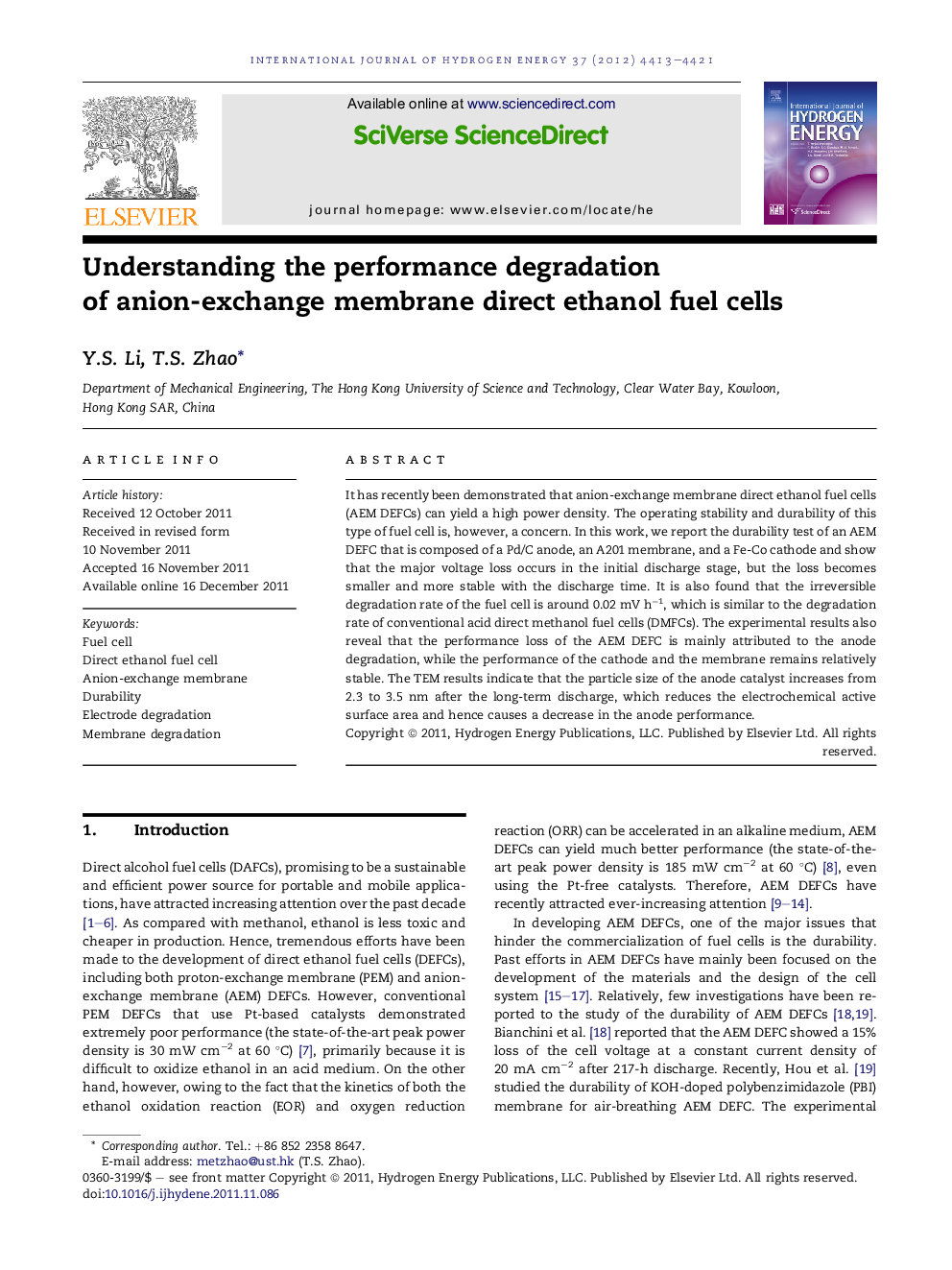| Article ID | Journal | Published Year | Pages | File Type |
|---|---|---|---|---|
| 1275499 | International Journal of Hydrogen Energy | 2012 | 9 Pages |
It has recently been demonstrated that anion-exchange membrane direct ethanol fuel cells (AEM DEFCs) can yield a high power density. The operating stability and durability of this type of fuel cell is, however, a concern. In this work, we report the durability test of an AEM DEFC that is composed of a Pd/C anode, an A201 membrane, and a Fe-Co cathode and show that the major voltage loss occurs in the initial discharge stage, but the loss becomes smaller and more stable with the discharge time. It is also found that the irreversible degradation rate of the fuel cell is around 0.02 mV h−1, which is similar to the degradation rate of conventional acid direct methanol fuel cells (DMFCs). The experimental results also reveal that the performance loss of the AEM DEFC is mainly attributed to the anode degradation, while the performance of the cathode and the membrane remains relatively stable. The TEM results indicate that the particle size of the anode catalyst increases from 2.3 to 3.5 nm after the long-term discharge, which reduces the electrochemical active surface area and hence causes a decrease in the anode performance.
► A better understanding of performance degradation of AEM DEFCs is presented. ► The irreversible degradation rate of AEM DEFCs is found to be around 0.02 mV h-1. ► The degradation rate of AEM DEFCs is similar to that of conventional acid DMFCs. ► The performance loss of AEM DEFCs is due mainly to the anode degradation.
